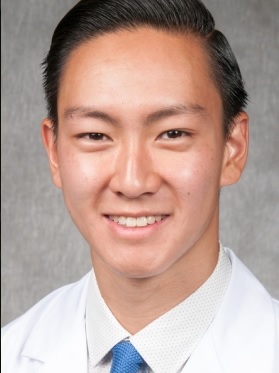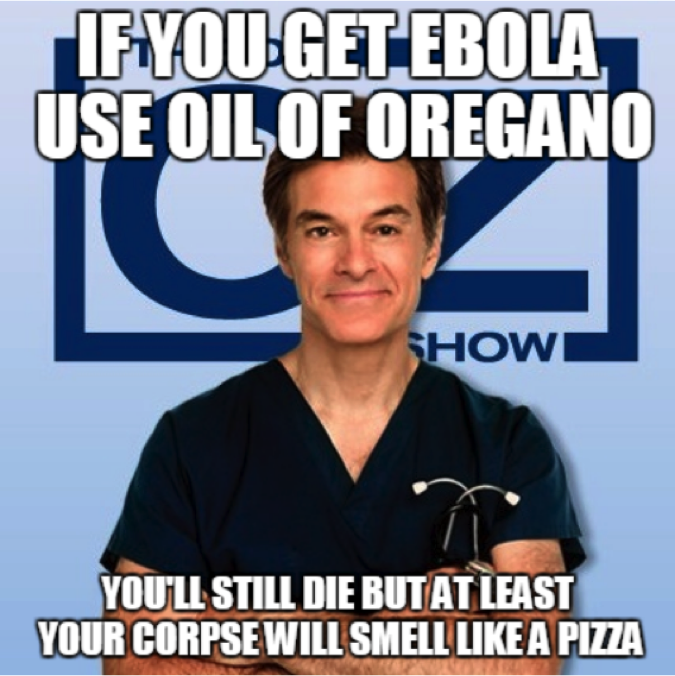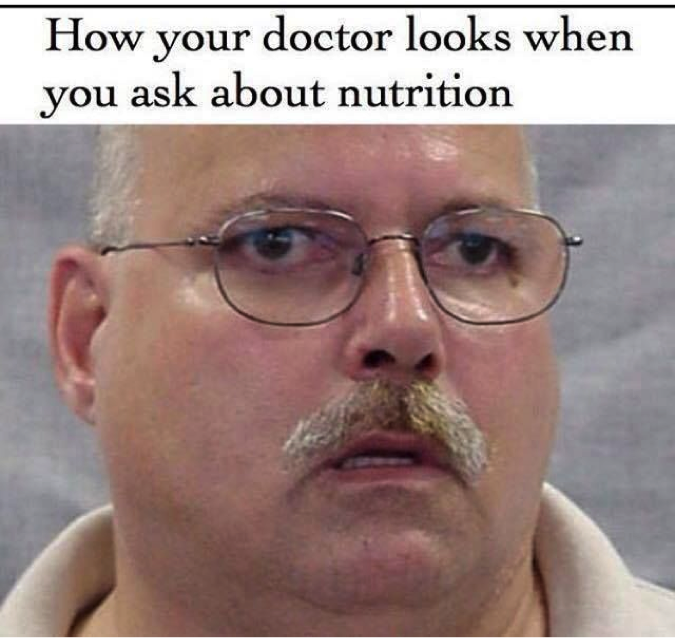Advice on how to eat is perhaps the most ubiquitous type of medicine we are exposed to throughout our day-to-day. Just look at Dr. Oz or recall the waxing and waning popularity of fad diets. While I struggle to define any sources as legitimate nutrition education, it stands to reason that at least doctors receive training about carbs, calories and fats, right?
The only nutrition course I remember getting was a four-hour session during my first year of medical school. Specifically incorporated into a biochemistry team-based learning (TBL) session, I remember getting asked a question about the difference between kwashiorkor and marasmus. Maybe it was the difficulty I was having wrapping my mind around the disfiguring consequences of deficiencies in the purine salvage pathway. Perhaps my (not to mention my teammates’) disdain for the tedious nature and 8:30 a.m. start time of TBL? Whatever the reason, I distinctly remember wondering out loud, “Who cares?”
Looking back, I’m still not sure of the point of the question. Okay fine, kwashiorkor refers explicitly to protein deficiency (often characterized by edema) while marasmus is general calorie deficiency without deficits in any specific nutrient, but still … Who cares?
Given our exceedingly limited nutrition education, is extreme malnourishment really that relevant for soon-to-be physicians, most of whom will be practicing in one of the most obese countries in the world?
No disrespect to those of us who someday choose to practice in areas with kwashiorkor, but I’d argue that my frustration is not only justified, but also a feeling shared by many other medical students in the United States.
We’ve all heard the mantra “food is medicine” as it’s become increasingly obvious that nutrition is an integral part of disease management. A 2013 study of identified dietary factors as the single most salient risk factor for disability and premature death. Though both the Accreditation Council for Graduate Medical Education (ACGME) and Residency Review Committee (RRC) either require or strongly suggest incorporating nutrition into residency education, data from 2014 suggests that there remains a lack of programming as evidenced by the lack of a nutritional component in the Cardiovascular Disease and Internal Medicine training requirements. Yet a dismal 25 percent of U.S. medical schools offer dedicated courses on nutrition. Within those schools, students receive only 19.6 contact hours over the four-year curriculum dedicated to nutrition.
But isn’t it the nutritionist’s job to counsel patients?
Of course! However, I have trouble believing that a physician’s responsibilities to the patient end at adhering to “best practice” guidelines. All the randomization, double blinding and controlling for variables in the world can’t always account for patient context. Defined as “all that is expressed outside the boundaries of a patient’s skin,” patient context includes factors ranging from competing responsibilities to financial situation that can complicate the provision of care. If these are not addressed, contextual medical errors can result, such as prescribing medications with adherence regimens that do not fit with a patient’s lifestyle. Ultimately, the patient bears the brunt of this burden and is subject to poor healthcare outcomes and increased medical costs. It seems to me that nutrition is an amalgam of different contextual domains. Comprehensive management by the entire continuum of health professionals, in line with the growing trend of inter-professional teamwork, is necessary for efficacious care. Physicians specifically play the key role of increasing awareness and personalizing the importance of good nutrition and lifestyle practices for disease treatment and prevention.
But even if we understand that our patient’s symptomatic vision changes, frequent urination and excessive thirst began very soon after the installation of a free soda machine at work, how are we to advocate for diet change and an increased exercise regimen if our very limited nutrition education is focused on things like treating scurvy?
Despite the corniness of the “see one, do one, teach one” model, I think its use is warranted when educating about nutrition (especially when advocating for eating more vegetables). By teaching future physicians to focus on their own personal health habits via a hands-on modality, they can internalize firsthand the benefits and challenges of modifying lifestyle behaviors. Additionally, studies of medical students who modified their own habits after receiving education and training showed an increase in confidence in and willingness to perform nutritional counseling.
So what are medical students who are dissatisfied with the state of their nutrition education to do?
I find that there are three possible solutions:
1. Advocate for yourself. I later realized that the rushed nature of our single nutrition TBL was in part a student effort to better incorporate nutrition into our curriculum. Though it could have been better executed, student interest was the catalyst for a step in the right direction.
2. Join a club or volunteer at a health fair. Often, health fairs are interdisciplinary events that can give you exposure to different health professional disciplines. Spend enough time at the nutrition booth and you might just learn something!
3. If all else fails, educate yourself. Eliciting curricular change is a nebulous, slow-moving process (take it from me as I’m a part of the Student Curricular Board helping with curriculum reform at the University of Illinois at Chicago). Even the most powerful advocates must deal with the reality that the absence of high-quality instruction is often attributable to a lack of funding or interested faculty. In my experience, familiarizing yourself with the materials offered to patients at clinic is enough to answer the bulk of questions as most misconceptions come from too brief an explanation of why cutting down on sodium or increasing dietary fiber is good for your health.
Nutrition education in medical school feels like another proclaimed essential competency that receives a disproportionately small portion of the curriculum (peep my last post on cultural competency). Nevertheless, I think that kwashiorkor or marasmus is largely inapplicable to most patients seen in U.S. hospitals and clinics. A more inclusive mindset, however, regarding both the patient’s specific circumstance and the involvement of an inter-professional health care team, is paramount to pushing nutrition education in the right direction.





